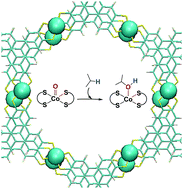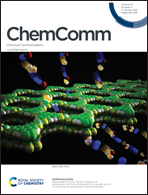Deterministic role of structural flexibility on catalytic activity of conductive 2D layered metal–organic frameworks†
Abstract
A combined quantum mechanics and classical molecular dynamics approach is used to unravel the effects of structural deformations and heterogeneity on catalytic activity of 2D π-stacked layered metal–organic frameworks. Theory predicts that the flexible nature of these materials creates a complex array of catalytically active sites for oxidative dehydrogenation of propane. Using an ensemble approach and oxygen bond formation energy, as an excellent probe, we investigate the catalytic activity down to the single active site level.



 Please wait while we load your content...
Please wait while we load your content...
